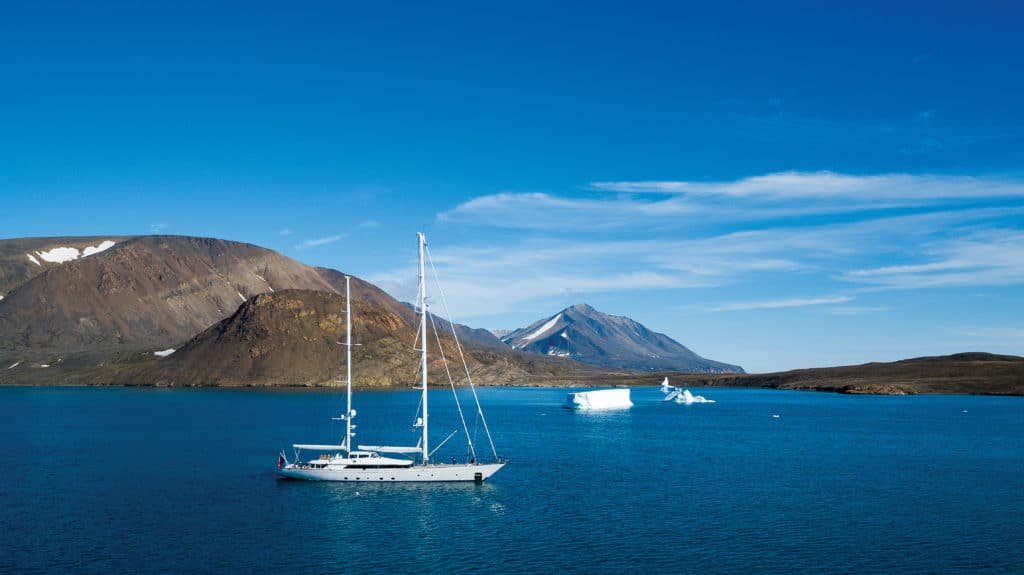
“We looked at the Jacuzzi, and my wife thought maybe we should store our vegetables in there,” he says. “We went a little further and put some insulation in and modified the canvas cover.”
The idea not only worked, but also for two months last summer, Rosehearty‘s hot-tub-turned-chiller became part of some truly memorable experiences.
“We put all of the vegetables up there,” Hutchison says. “We’d find an iceberg, go over, get a chain saw, chisels and hammers and knock off some lumps of ice, and for three or four days, we could pack that ice.”
Unusual? Yes, but then again, exploring the Northwest Passage is the stuff of adventure-minded yachtsmen’s dreams. Rosehearty‘s owner is such a man. After years of planning, he decided that 2016 was the time to make that particular dream come true — the first of more adventurous cruises to come, including some with charter dates in Chile and Antarctica during 2018.
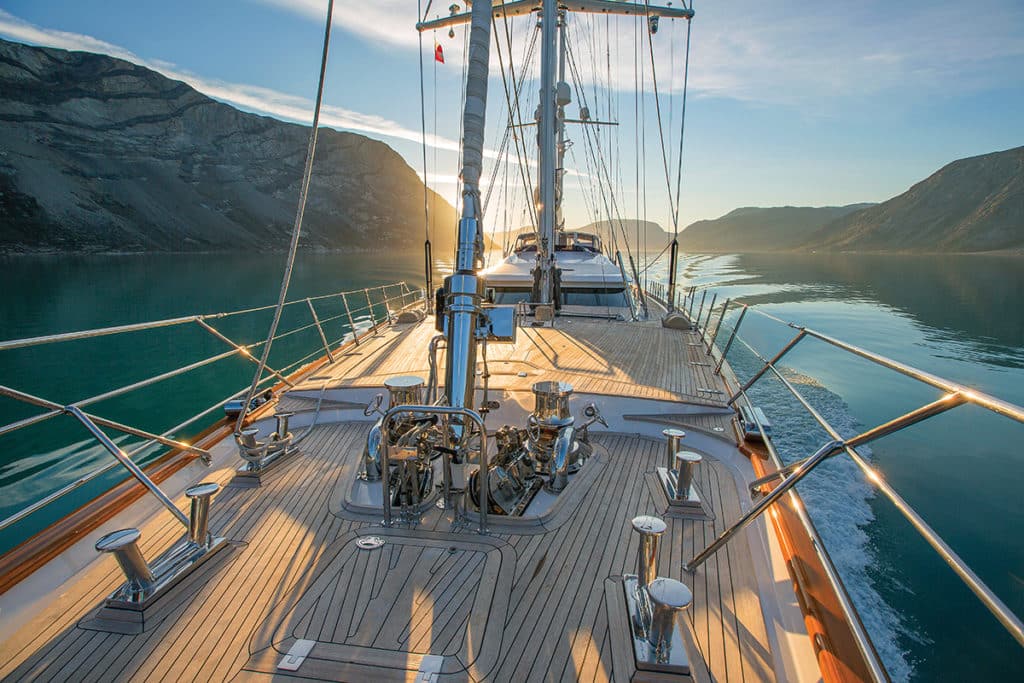
David and Raya Hutchison stood on the flybridge, stared at the hot tub and decided to discuss… cucumbers. The couple, who are captain and chef aboard the 183-foot Perini Navi Rosehearty, was preparing for a cruise from New England to the Northwest Passage. The planned route would leave them responsible for 24 souls: a permanent crew of 13, a Canadian naturalist, a Canadian logistics expert, an ice pilot and eight guests, including Rosehearty‘s owner. All of those people were going to get hungry — in parts of the world so remote that provisioning can be impossible for up to a month at a time.
The Hutchisons already knew how to stock up in a way that let them produce five-star cuisine in far-off anchorages, from the Caribbean to the Mediterranean. Rosehearty charters at a weekly base rate that, during prime seasons, can top $250,000. But the Northwest Passage posed a tougher challenge, one that called or creative thinking. In fact, Capt. David Hutchison says figuring out how to provision and stow enough fresh vegetables turned out to be harder than modifying the 10-year-old sailing yacht to cruise safely and comfortably in waters packed with ice.
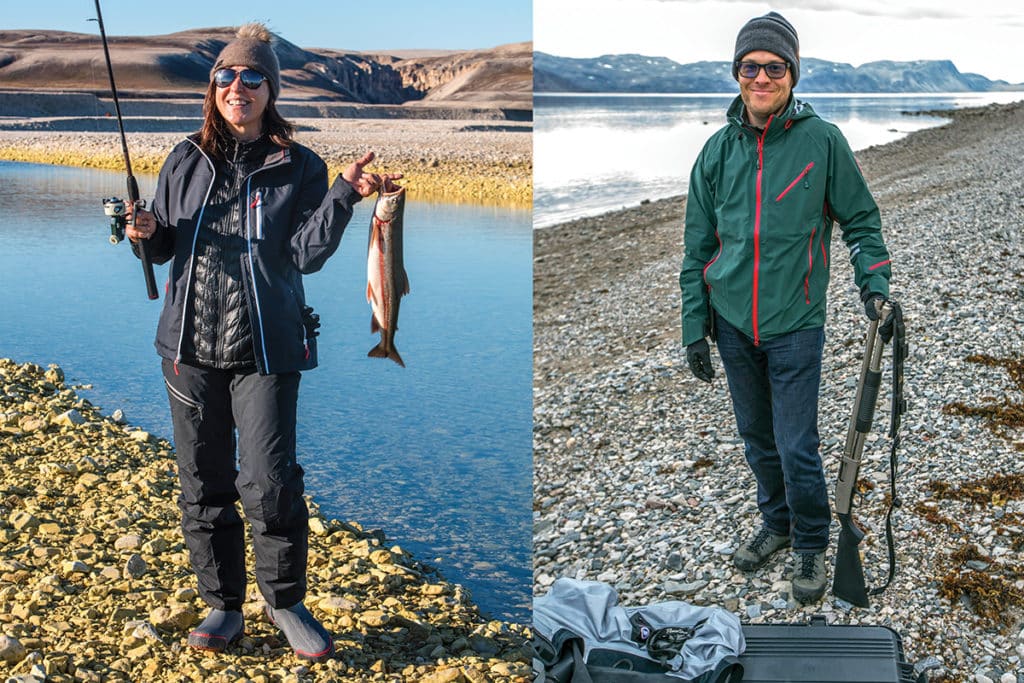
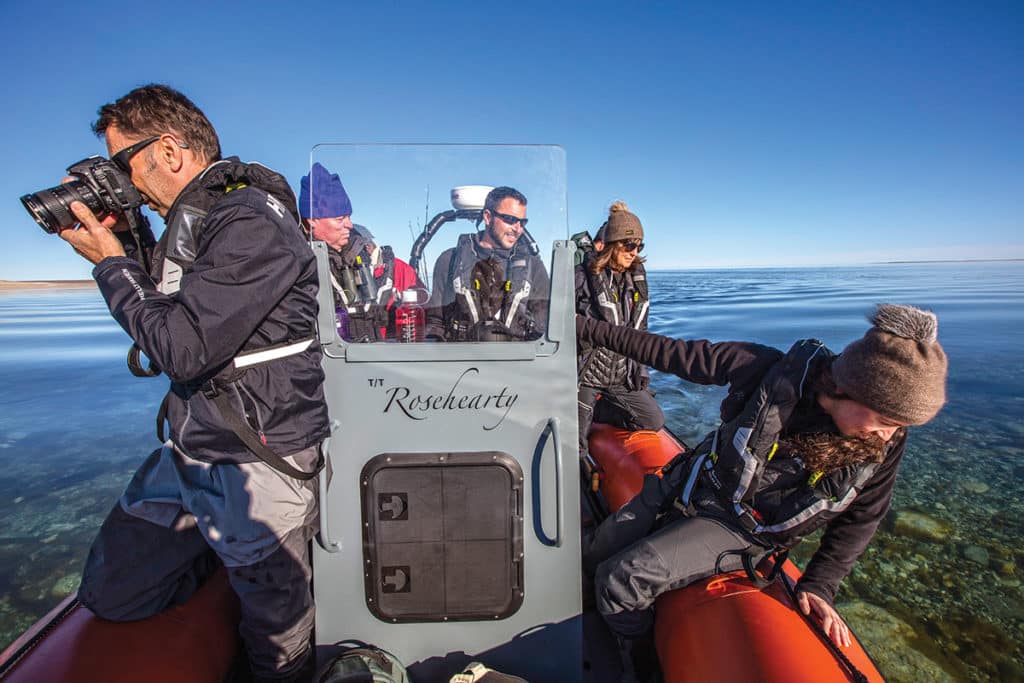
That’s why, in a sense, the journey that Rosehearty took to the Northwest Passage last summer was kind of a shakedown cruise, a chance to see how things turn out for the cucumbers and more when a luxury sailing yacht goes to the ends of the Earth. The itinerary served as a harbinger of the types of experiences Rosehearty will offer charter clients in the seasons to come.
The original plan was to sail from New England to Greenland, leave there at the end of July, cruise through the Northwest Passage and finish at the Pacific Ocean. Timing the entry was crucial, Hutchison says, because pack ice makes the eastern part of the Arctic inaccessible for all but a few weeks each summer.
“It’s never really opened until the 25th or 28th of July, just to get into some of the initial places on the trip, and then it closes pretty quickly,” he says. “Most of the ice is driven down through the strait, and it packs up around the island, and it blocks the place up.”
Once Rosehearty got up there, though, the owner had to change his plans. The Pacific route had to be scrapped because of timing — a lucky break, in a way, because the yacht got to spend more time in the eastern Canadian islands.
“It’s a lot more drama, wildlife, scenery in that part than there is in the Canadian and Alaskan coasts,” Hutchison says.
Perhaps surprisingly, the modifications Rosehearty needed to complete the journey were minimal. The owner added a flybridge enclosure with clear panels, to capture the frequently recirculated fresh air that normally would have been expelled from the interior. Even when the outside air temperature was about 40 degrees Fahrenheit and the wind was blowing 20 knots, Hutchison says, “It was comfortable enough to be up there without a jacket.”
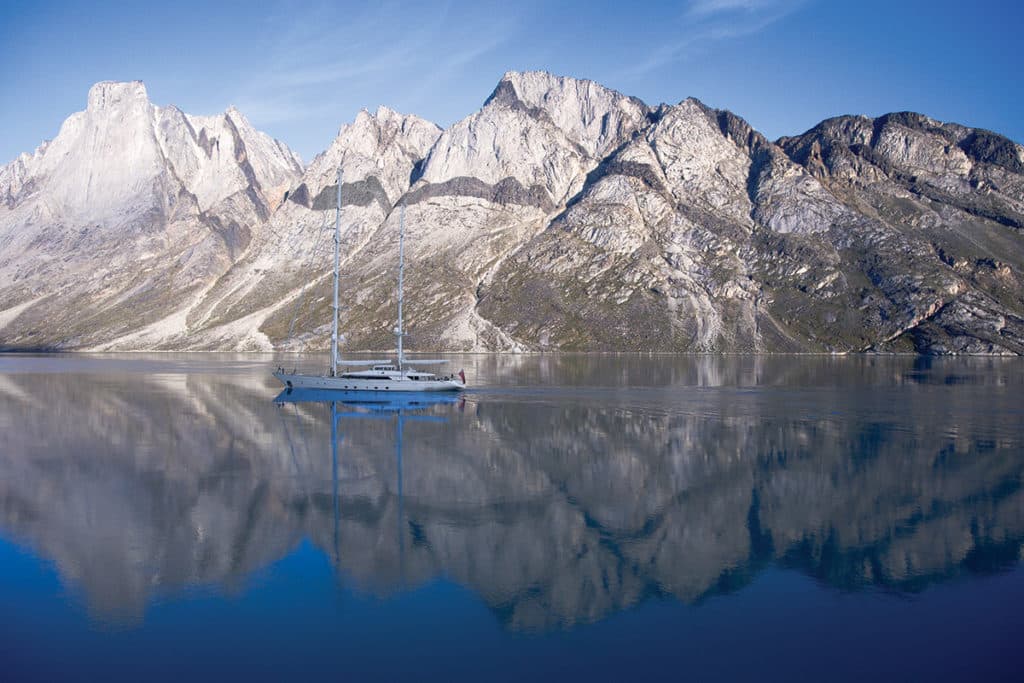
In addition to retrofitting the hot tub for vegetable stowage, the crew also kept stores fresh in the parts of the bilge that lacked insulation.
“We’re a fairly big charter boat and have good freezer space,” Hutchison says, but a lot of the time, “the outside water temperature was minus 1 or minus 2 Celsius [28 to 30 degrees Fahrenheit], so anything in the uninsulated bilge areas of the boat was fine. It wouldn’t freeze, but it was fine.”
The crew also left the yacht’s two personal watercraft in New England and used that space for a new 23-foot Milpro tender. The military-grade Zodiac didn’t look as pretty as Rosehearty‘s usual guest tender, but with its twin 70 hp outboards, AIS, radar and GPS, the Milpro was reliable for weaving among icebergs and more.
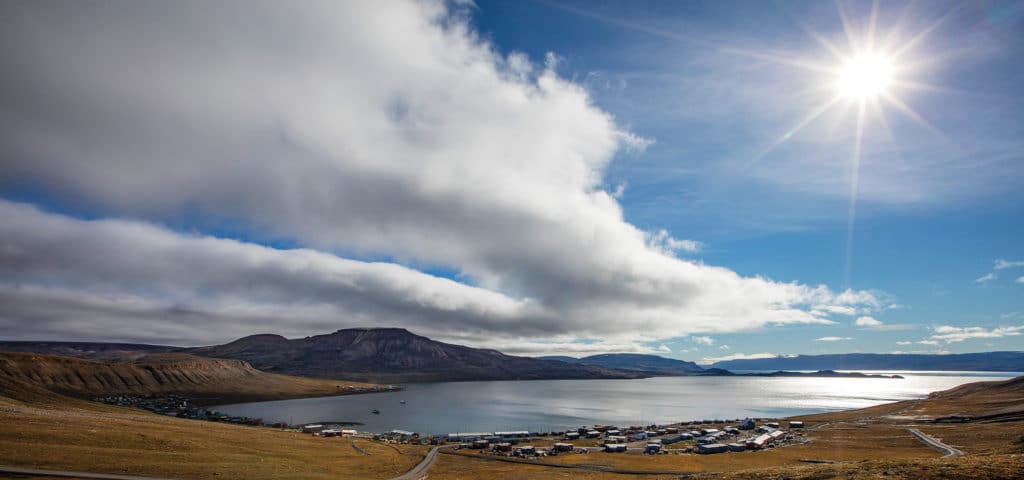

“We’d load it up with 10 people and go fishing, polar bear sighting, that type of thing,” Hutchison says. “It was an open plan, not a yacht tender, more of a workhorse. We could throw stuff in and drag stuff out.” Helm electronics were key, Hutchison says, aboard the tender and Rosehearty herself. Help can be days away, and ice packs can move in fast. Being able to receive regular weather and ice reports, as well as contact the authorities daily, was crucial.
“You actually tell the Canadian Coast Guard where you want to go, what your route plan is, and they’ll tell you whether it’s OK or if you have to change [your] route,” Hutchison says. “They want you to report every six hours, and if you don’t report, they get anxious and start to email saying, ‘C’mon guys, where are you?’”
Traditional charts sometimes bore no resemblance to reality. Using only paper charts, he says, would send any captain “back to the time when everybody used to fail. You end up in the wrong place in the wrong time.”
“You’re supposed to be in 70 meters of water and you find yourself in 7 meters because these tall icebergs drift around,” he says. “We had the pack ice returning with currents. We were quite lucky to get out of there as we did. You can imagine a couple-thousand-ton ice block landing on your anchor chain or grounding on top of it.”
There is Internet service, Hutchison says, primarily for use by airplanes. Rosehearty has VSAT-supported Internet capability, which worked best for maintaining communications; the yacht also had Iridium service as a backup.
“The satellite, a lot of times, was on the horizon,” Hutchison says. “When you’re up at 77 degrees North and looking at an equatorial satellite, you’re almost looking around the curve of the Earth. The Iridium was slower, but it was good enough to use to get the weather and ice reports.”
At Creswell Bay, where Rosehearty anchored in mid-August, having faster communications turned out to be key.
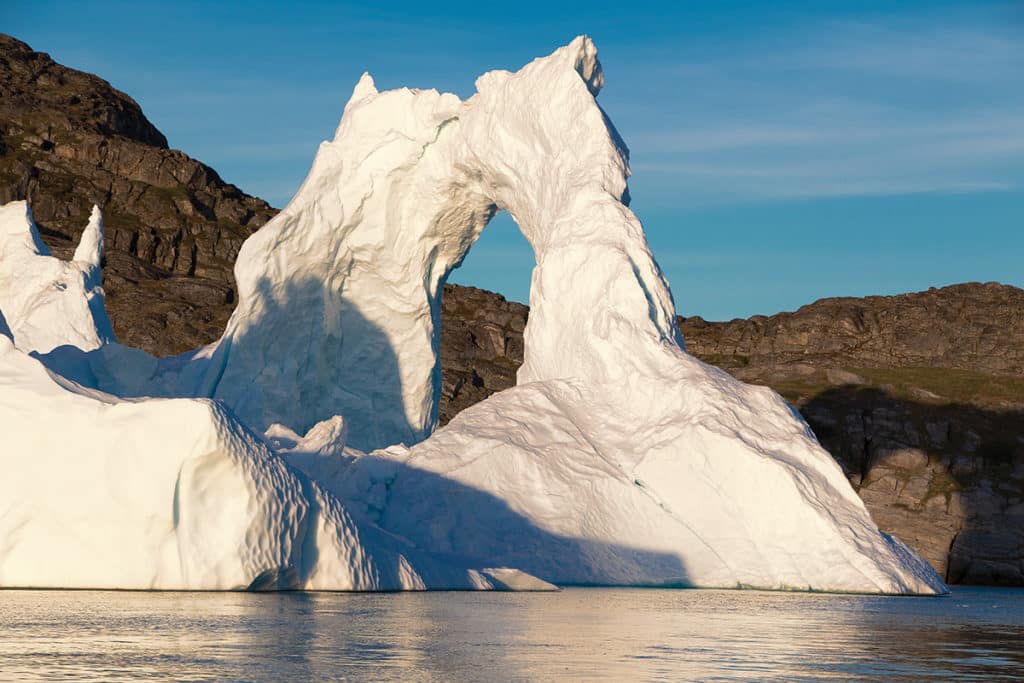
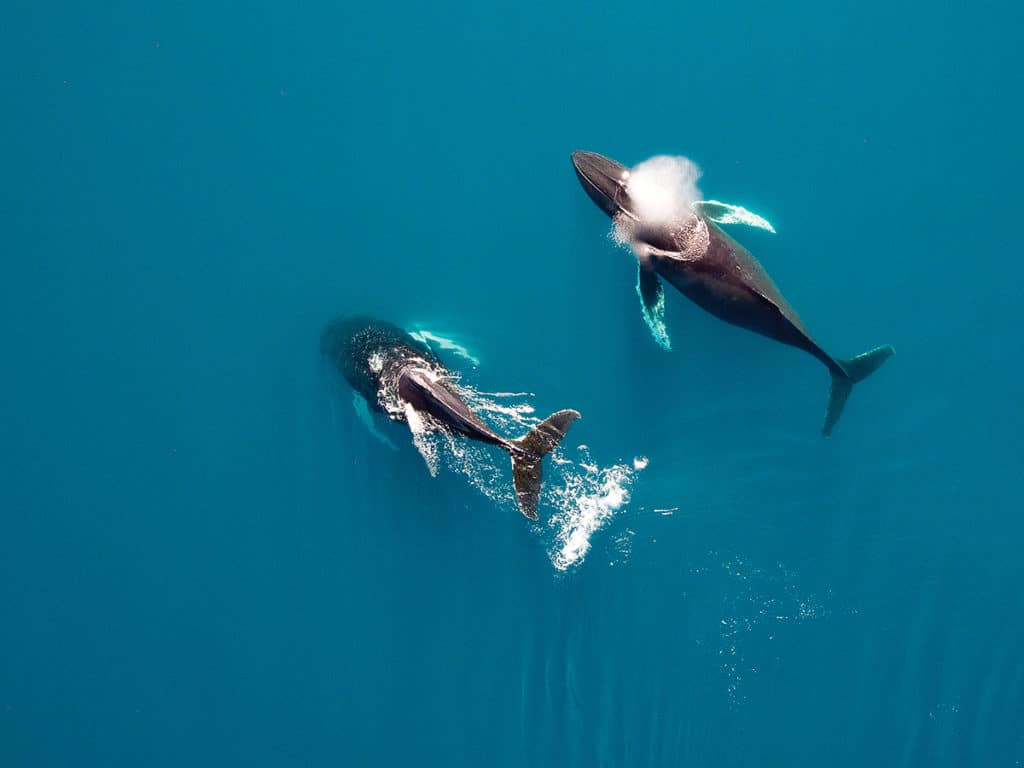
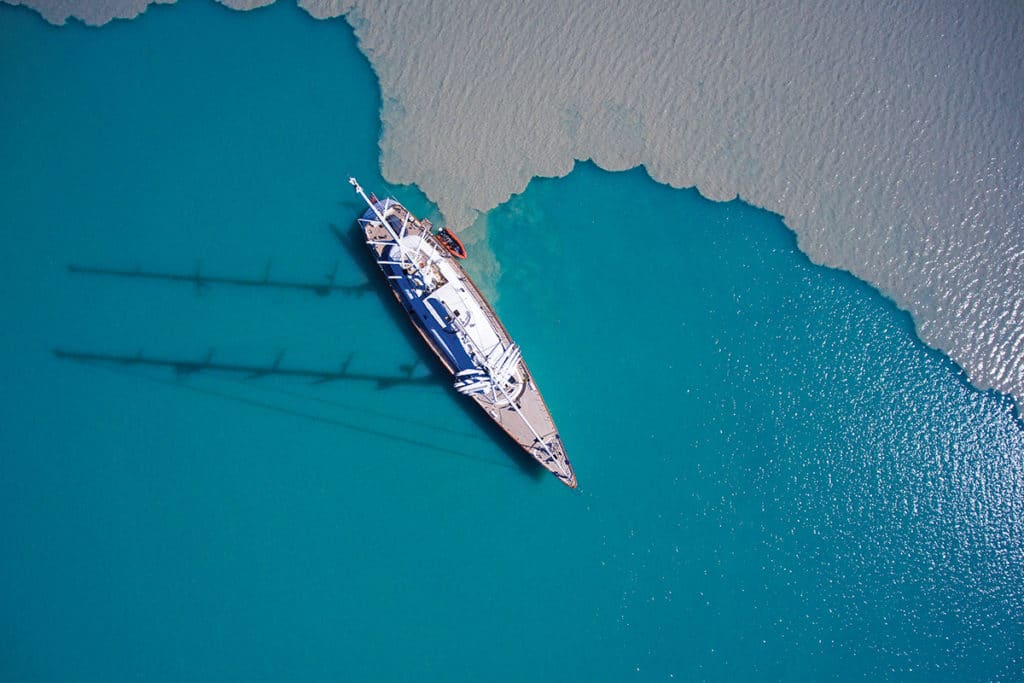
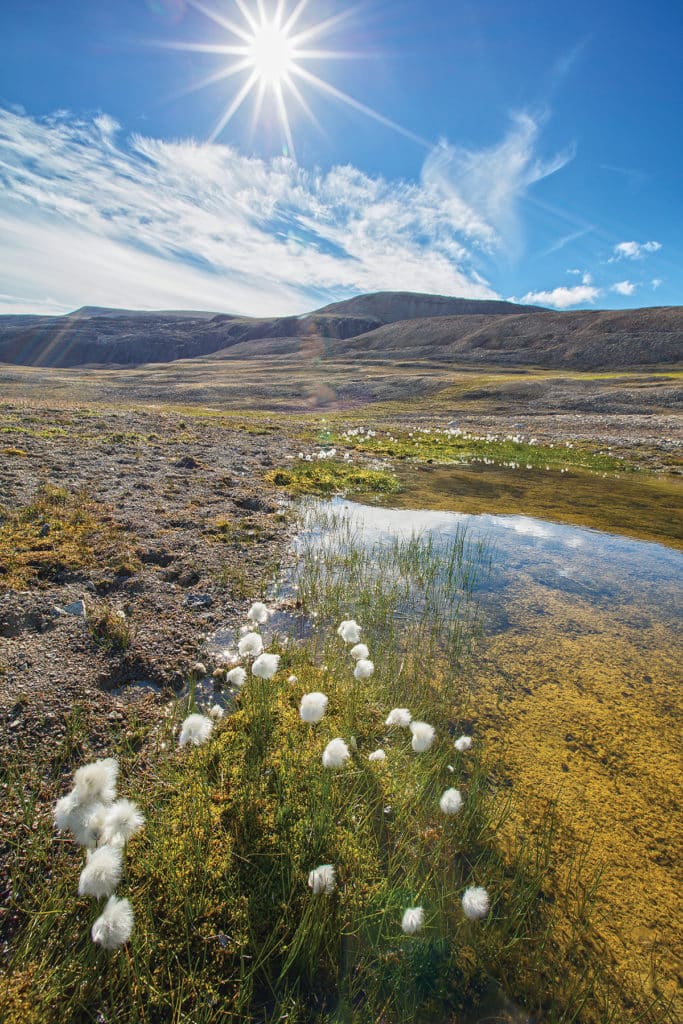
“We were sitting quite happily in Creswell Bay and saw these little white dots on the horizon,” Hutchison says. “You wouldn’t think they could move so fast, but they do. The ice pack had decided to move back, so we left there around 7 o’clock at night knowing we had to run five or six hours to get to the next safe haven, and there was a lot of ice around. That was a tense time.”
Even still, he says, the Rosehearty crew is looking forward to offering charters near the planet’s other pole in 2018. They also are still thinking about what more they might experience if they give the full Northwest Passage another try.
“I think if you asked any of us on the boat whether we want to go back, we’d say yes,” Hutchison says. “We didn’t see as many whales as we were expecting — we were a little too late for the beluga whales, which had moved on, and the narwhals were a little [skittish] because the locals were hunting them — but we did see about eight to 10 polar bears, and walrus, and the bird life. “It’s special,” he says. “It’s tundra. It’s wild. The remoteness of it — the scenery is spectacular.”
Read the Rosehearty blog from the Northwest Passage, and see the exact route the yacht traveled.









